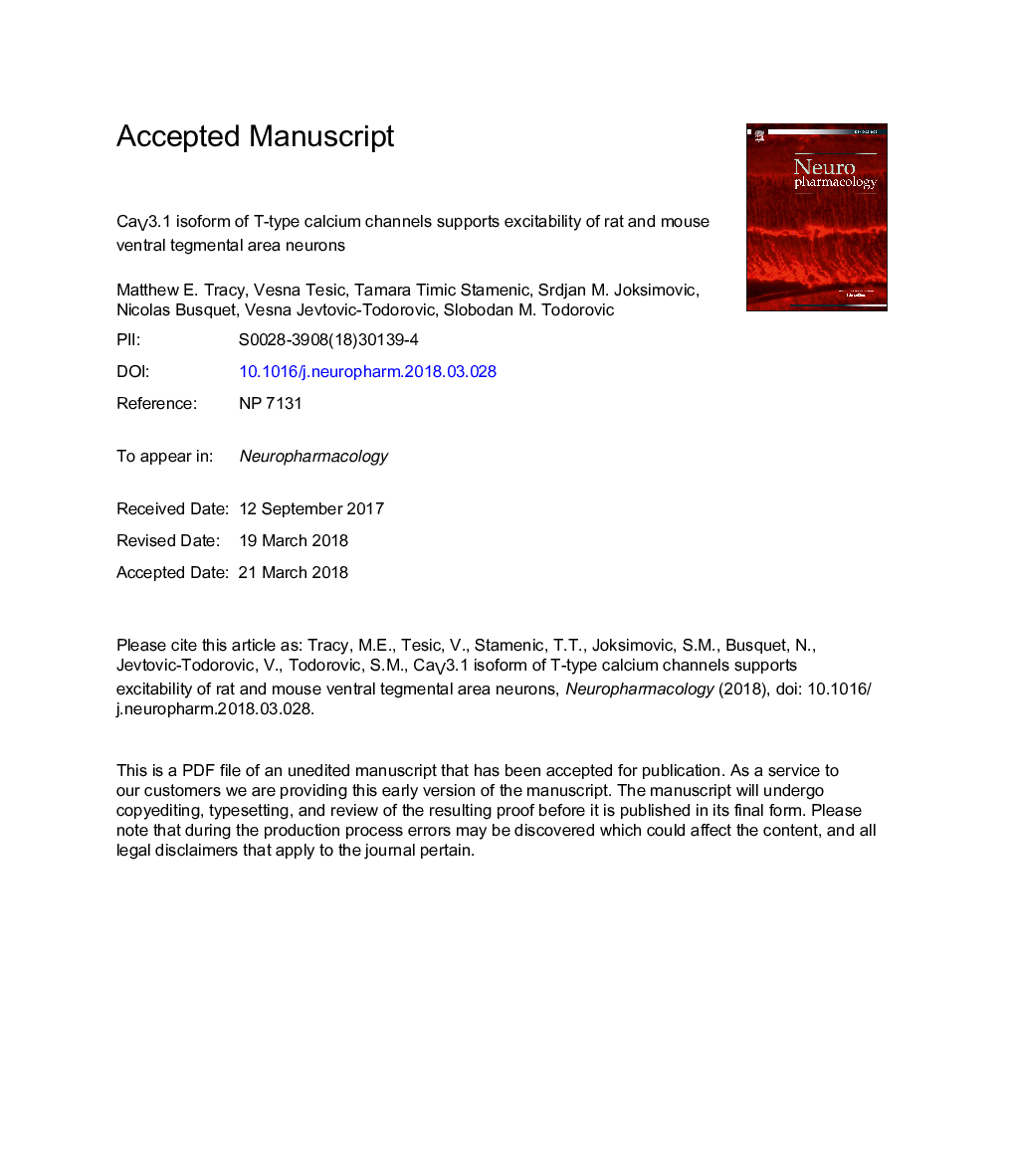| Article ID | Journal | Published Year | Pages | File Type |
|---|---|---|---|---|
| 8516729 | Neuropharmacology | 2018 | 45 Pages |
Abstract
Recent data have implicated voltage-gated calcium channels in the regulation of the excitability of neurons within the mesolimbic reward system. While the attention of most research has centered on high voltage L-type calcium channel activity, the presence and role of the low voltage-gated T-type calcium channel (T-channels) has not been well explored. Hence, we investigated T-channel properties in the neurons of the ventral tegmental area (VTA) utilizing wild-type (WT) rats and mice, CaV3.1 knock-out (KO) mice, and TH-eGFP knock-in (KI) rats in acute horizontal brain slices of adolescent animals. In voltage-clamp experiments, we first assessed T-channel activity in WT rats with characteristic properties of voltage-dependent activation and inactivation, as well as characteristic crisscrossing patterns of macroscopic current kinetics. T-current kinetics were similar in WT mice and WT rats but T-currents were abolished in CaV3.1 KO mice. In ensuing current-clamp experiments, we observed the presence of hyperpolarization-induced rebound burst firing in a subset of neurons in WT rats, as well as dopaminergic and non-dopaminergic neurons in TH-eGFP KI rats. Following the application of a pan-selective T-channel blocker TTA-P2, rebound bursting was significantly inhibited in all tested cells. In a behavioral assessment, the acute locomotor increase induced by a MK-801 (Dizocilpine) injection in WT mice was abolished in CaV3.1 KO mice, suggesting a tangible role for 3.1â¯T-type channels in drug response. We conclude that pharmacological targeting of CaV3.1 isoform of T-channels may be a novel approach for the treatment of disorders of mesolimbic reward system.
Related Topics
Life Sciences
Neuroscience
Behavioral Neuroscience
Authors
Matthew E. Tracy, Vesna Tesic, Tamara Timic Stamenic, Srdjan M. Joksimovic, Nicolas Busquet, Vesna Jevtovic-Todorovic, Slobodan M. Todorovic,
